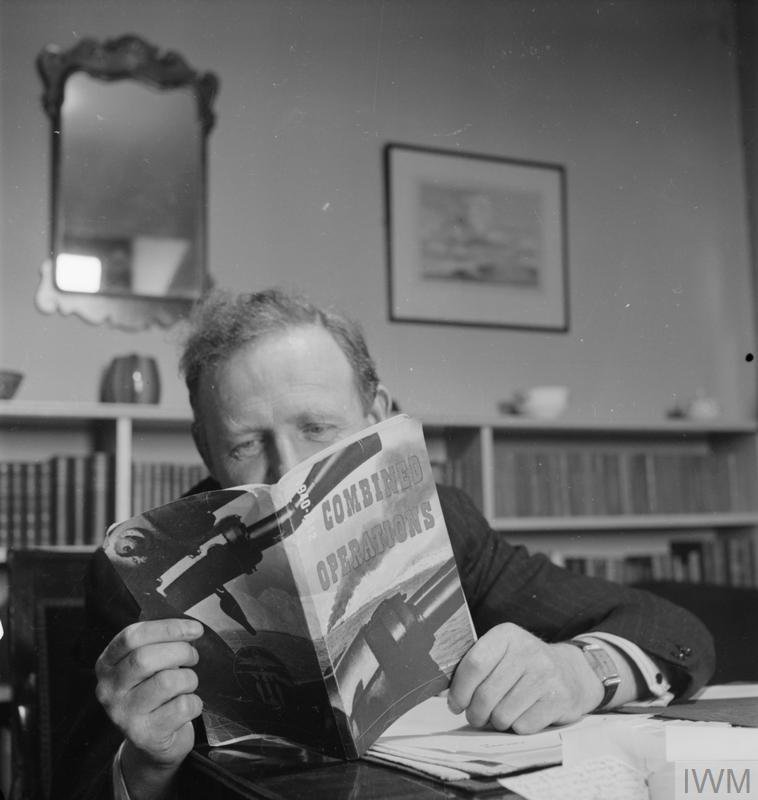The Thriller Writer and the Ministry of Information

This post first appeared on the Talking Humanities blog.
Although government institutions can appear impersonal, all are shaped by those who work for them. This was especially true of the Ministry of Information established at the outbreak of the Second World War. Its (mostly temporary) staff were an eclectic mix who reflected the remarkably varied work it was responsible for undertaking.
The Ministry had been designed to act as the ‘centre for the distribution of all information concerning the war’. It was broadly responsible for issuing official news, censoring anything deemed to be of military value, co-ordinating domestic publicity campaigns, and producing propaganda to boost domestic morale and influence opinion overseas. It was a department where retired Admirals rubbed shoulders with artists, advertisers and budding authors. The Ministry had, after all, employed or commissioned a veritable who’s who of mid-twentieth century British culture including Cecil Beaton, Kenneth Clark, Jill Greenwood, Humphry Jennings, Laura Knight, Cecil Day-Lewis and Dylan Thomas, amongst others.
I have spent much of the last five years delving into this diverse world as part of the Institute of English Studies research project ‘A Communication History of the Ministry of Information, 1939-1946’. The project has combined academic research with a range of public-facing activities. One of the most rewarding aspects has been speaking to people whose parents or grandparents worked for the Ministry. Among the many stories we have heard was that of a clerk who joined the Ministry’s Finance Division in 1941 and was responsible for budgeting money for propaganda activities in the United States of America.
Where possible, we have sought to help people find out more about these family histories. Frustratingly, though, there is often little physical evidence of the work individuals were responsible for. Those working on temporary contracts left few traces in the official record, while surviving documents tend to favour the big picture at the expense of granular detail. These limitations also apply to many of the well-known names connected with the Ministry.
Happily, however, there are some areas where it has been possible to draw out the influence of particular individuals. This is especially true of the Ministry’s publishing activities, which I have written about in Cynthia Johnston’s newly-published collection The Concept of the Book: The Production, Progression and Dissemination of Information (London: SAS Publication, 2019).
The chapter is focused on the ‘Official War Books’ published by the Ministry of Information after March 1941 (you can see a selection of these books in a previous post on our project blog). It explains how these books were conceived, demonstrates their commercial success, and uses audience research conducted during the war to consider their impact. I argue that the books are an important – if overlooked – case study in Book History.
Although the Official War Books were published anonymously, they did not simply emerge from an impersonal government department. Quite the opposite: the books depended upon the expertise of experienced authors and publishers. Foremost amongst these was the thriller-writer Hilary Aidan St George Saunders. Better known by the pseudonyms ‘Francis Beeding’ or ‘David Pilgrim’, he had an illustrious career in publishing and his most famous novel, The House of Dr Edwardes (1927) was adapted into Alfred Hitchcock’s 1945 blockbuster, Spellbound.
On the face of it, Saunders’ career might seem improbable. He had begun to write while working for the League of Nations and had been appointed as an assistant librarian at the House of Commons before the Second World War broke out. In 1939, he was seconded to the Air Ministry, where he acted as a go-between with the French government’s information department. After the fall of France in June 1940, he was asked to begin research for an official book on the Battle of Britain.
The finished product combined operrational plans with a lively narrative based on interviews with returning airmen. It deliberately eschewed the names of anyone involved in an attempt to connect readers with the events described. In a memoir published in 1944, Saunders’ explained that he saw himself as a ‘pamphleteer’ whose job was to hold up a mirror ‘so that the passer-by may see in it what manner of world he lives in and what strange events he is helping to shape’.
The Battle of Britain was an immediate success. According to animated newspaper reports, the first print run of 50,000 copies was sold within a few hours, with another 300,000 copies placed on order. By April 1942, over 6 million copies had been produced and the text had been serialised in newspapers across the globe. Other books in the series were similarly successful. One title, Combined Operations, was even chosen by the prestigious American Book of the Month Club, which resulted in Saunders being sent on a publicity tour of the United States (a trip which would have likely put him in contact with the former clerk who was responsible for financing such activities).
Saunders was just one of the many people whose work for the Ministry of Information helped to shape attitudes towards the Second World War. But, as my chapter on the ‘Official War Books’ suggests, his was an important contribution. There is an important difference between the work of anonymous individuals and that of an impersonal machine.
